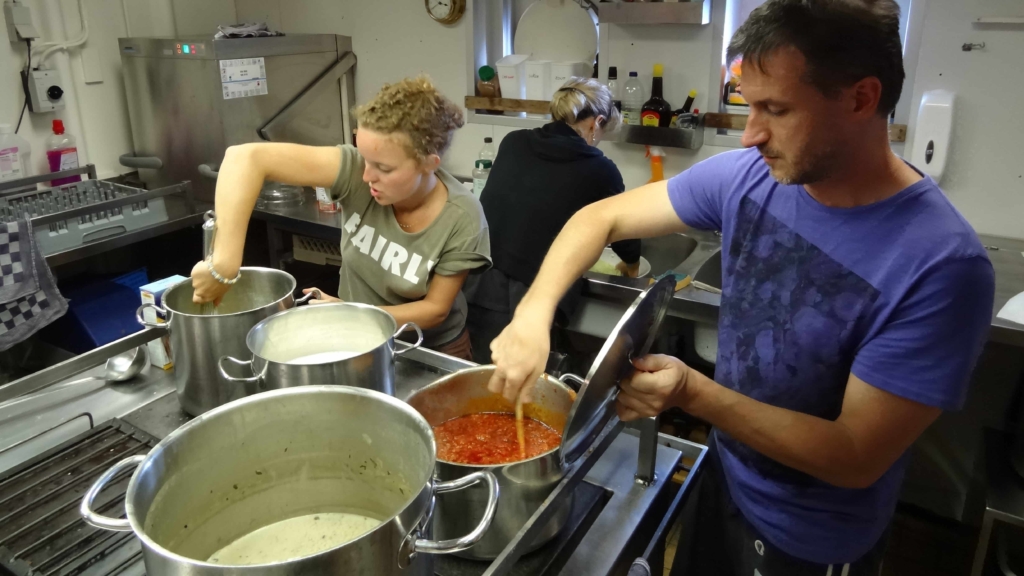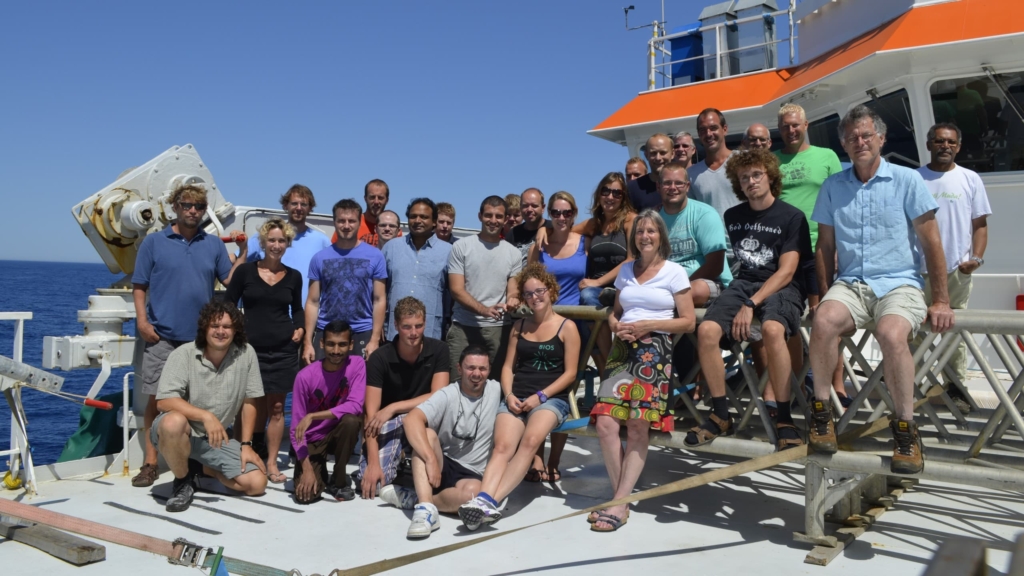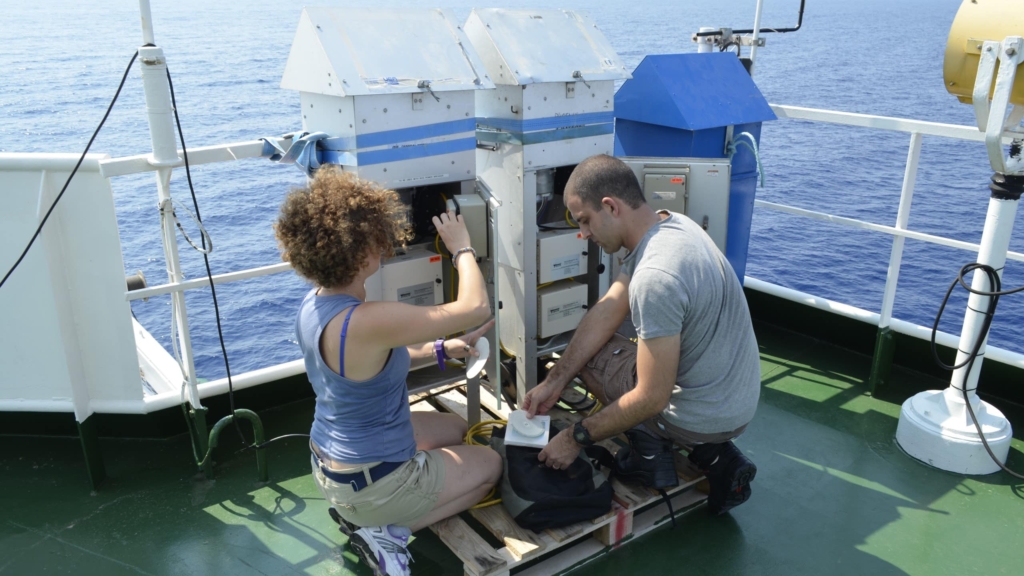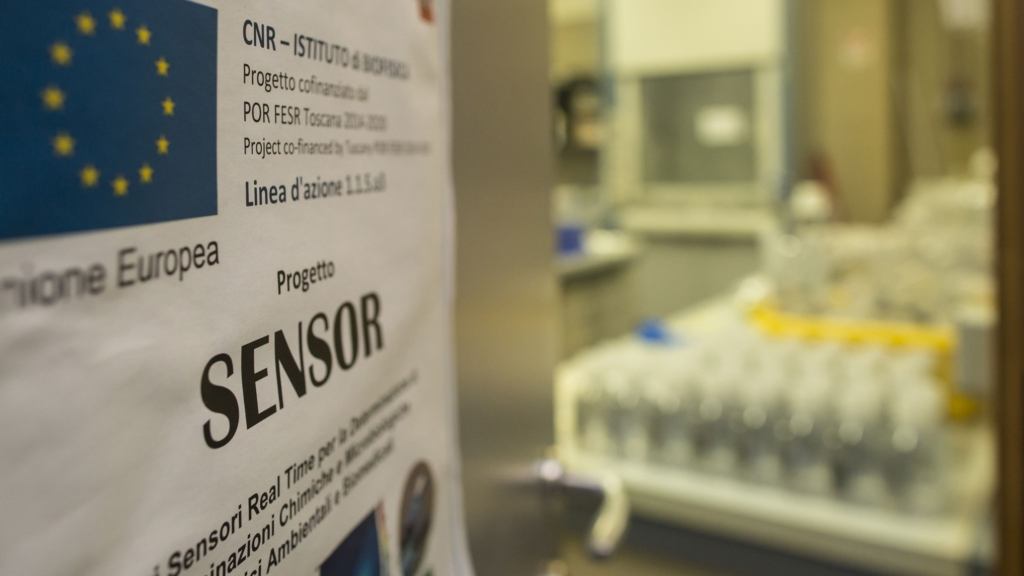Oceanographic cruises
Two Italians and two French in a Dutch ship kitchen
…and it’s not the beginning of a joke, but the conclusion of an amazing experience!
On July 25th, 2013 I was boarding the Dutch research vessel Pelagia in Istanbul, the disembarkation was in Lisbon on August 11th, a great time to be in the middle of the Mediterranean Sea, especially considering that all my previous experiences on board were during wintertime. This cruise was the third leg of the Geotraces cruise taking place in the Mediterranean and the Black Sea. During these 17 days, we collected samples for all sorts of measurements, from trace metals to nutrients, DOM of course, isotopes, oxygen, and the physical parameters. There were also two samplers to collect atmospheric depositions.
First impressions
I met the other participants outside the hotel in Istanbul in the morning, as there were vans arranged to take us to the port. My experience started with me almost missing the van because they forgot to notify me of the change of meeting time, luckily I have this bad habit of being always early. I was a bit scared and uncomfortable at the beginning, it was my first experience in a foreign research vessel, they all seemed to know each other, they all were much older and experienced than me, and on top of that, I was the one late. My mood changed as soon as we boarded the ship, which was incredibly bigger than those I have been before! During the cruise, there were a lot of socializing moments for both researchers and crew. We had a few barbeques at the stern, some parties with music and drinks, and also a couple of swims, one was in front of Stromboli island and the second one in front of Malaga.
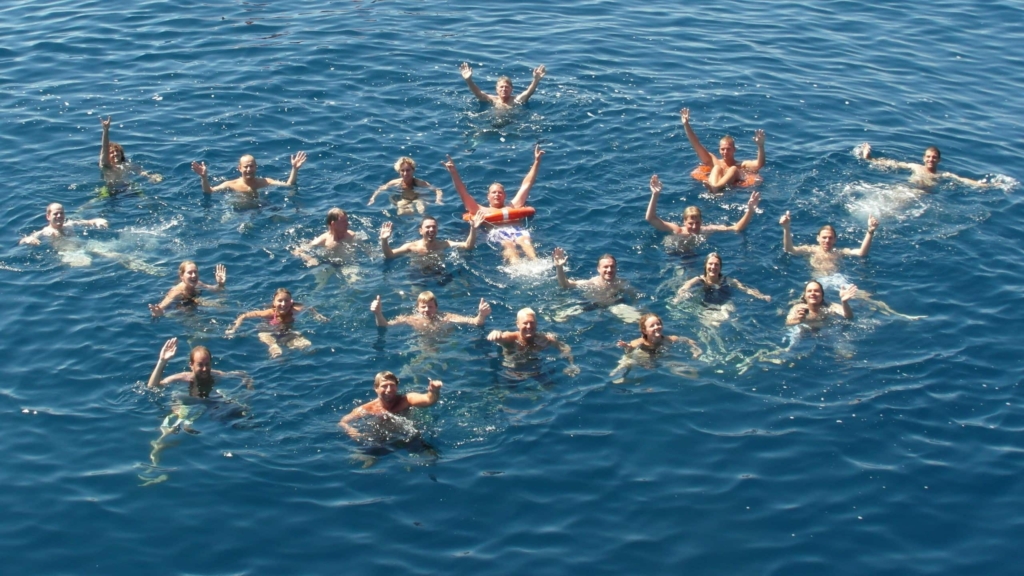
The work onboard: everything new to me
During the cruise, I was in the team in charge of trace-metal sample collection. It really was a big responsibility! If you think about it, when you are on a ship everything around you can contaminate for metal measurements, and we wanted to measure those in traces (less than 0.00001 grams per liter) so we had to take so many precautions. There was a second rosette system specifically made with no metal. Once onboard, the sampling system was placed in a container, having no metals inside. Then the sampling team could enter the container’s first room and dress up with overalls, plastic bags to cover the shoes, two pairs of gloves, and a cap before entering the second room where the rosette was. The sampling bottles were prepared in advance and wrapped into two plastic bags, we had to take one out before entering the sampling room and place a new one before getting the samples out. It may sound easy but it was not at the time.
As we placed filters directly at the bottle’s spigot we already get filtered samples so my job onboard was “finished” after sample collection. This is why I offered to help to get the atmospheric depositions samples. Me and Eyal (an Israelian researcher) every few days were climbing on top of the ship to collect the filters. We had a logbook to note the day, time, and the parameters shown by the instruments (wind speed, time passed, ecc…), take out the filters, reset the instrument and place new filters. It was quite fun!
Two Italians and two French in a Dutch ship kitchen
I have to admit that I had a lot of fun during the cruise, we worked hard but we enjoyed the time onboard. The only thing an Italian (and a French) could complain about was that good food was missing. Duch eats quite differently from us, it was not bad, but very different. That is why, when we realized that we had a couple of days of navigation between the last station and the disembarking port, me and Paolo (the other Italian researcher from CNR-ISMAR) decided to cook dinner for everyone, and the two French researchers decided to join us in the kitchen. The chef and kitchen team allowed us into their kingdom and opened the door of the food room. I have to say that the chef’s eyes look very scared when he saw our enthusiasm in entering the food room. We spent a few hours in the kitchen and at 18:00 everyone was sitting at the table ready to eat traditional Italian lasagne and a perfect mousse au chocolat as dessert. A perfect end for an amazing cruise! Once we arrived at the port we spent one last night together in Lisbon (enjoying the Portuguese food) and then one by one we left for the airport.
